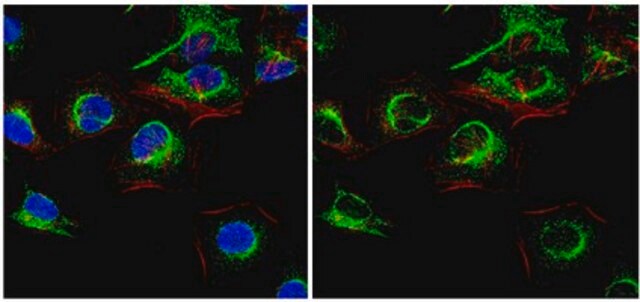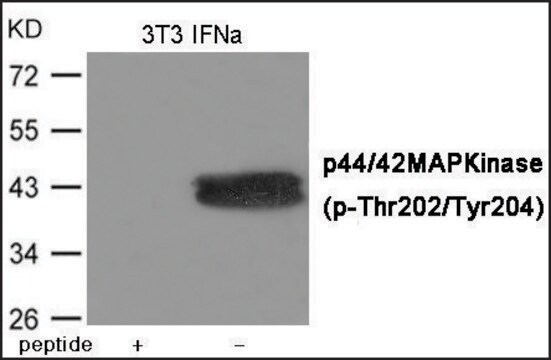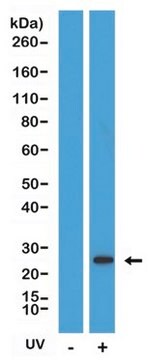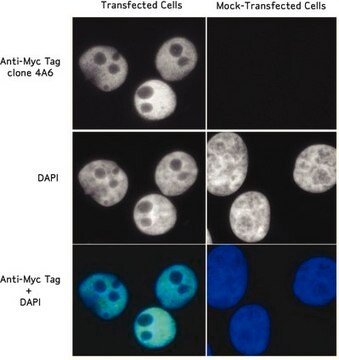C4106
Anti-Caspase 8 antibody, Mouse monoclonal
clone CAS8, purified from hybridoma cell culture
About This Item
Prodotti consigliati
Origine biologica
mouse
Livello qualitativo
Coniugato
unconjugated
Forma dell’anticorpo
purified immunoglobulin
Tipo di anticorpo
primary antibodies
Clone
CAS8, monoclonal
Stato
buffered aqueous solution
PM
antigen 53 kDa (additional bands may be seen at 33 and 10 kDa)
Reattività contro le specie
human
Concentrazione
~2 mg/mL
tecniche
indirect ELISA: suitable
microarray: suitable
western blot: 5-10 μg/mL using whole extract of a HeLa cells mitochondrial preparation
Isotipo
IgM
N° accesso UniProt
Condizioni di spedizione
dry ice
Temperatura di conservazione
−20°C
modifica post-traduzionali bersaglio
unmodified
Informazioni sul gene
human ... CASP8(841)
Categorie correlate
Descrizione generale
Specificità
Immunogeno
Applicazioni
- enzyme-linked immunosorbent assay (ELISA)
- immunohistochemistry
- western blotting
- immunocytochemistry
- indirect ELISA
- microarray
- western blot at a concentration of 5-10μg/mL using whole extract of a HeLa cells mitochondrial preparation
Azioni biochim/fisiol
Stato fisico
Stoccaggio e stabilità
Esclusione di responsabilità
Non trovi il prodotto giusto?
Prova il nostro Motore di ricerca dei prodotti.
Raccomandato
Codice della classe di stoccaggio
10 - Combustible liquids
Scegli una delle versioni più recenti:
Possiedi già questo prodotto?
I documenti relativi ai prodotti acquistati recentemente sono disponibili nell’Archivio dei documenti.
Il team dei nostri ricercatori vanta grande esperienza in tutte le aree della ricerca quali Life Science, scienza dei materiali, sintesi chimica, cromatografia, discipline analitiche, ecc..
Contatta l'Assistenza Tecnica.







